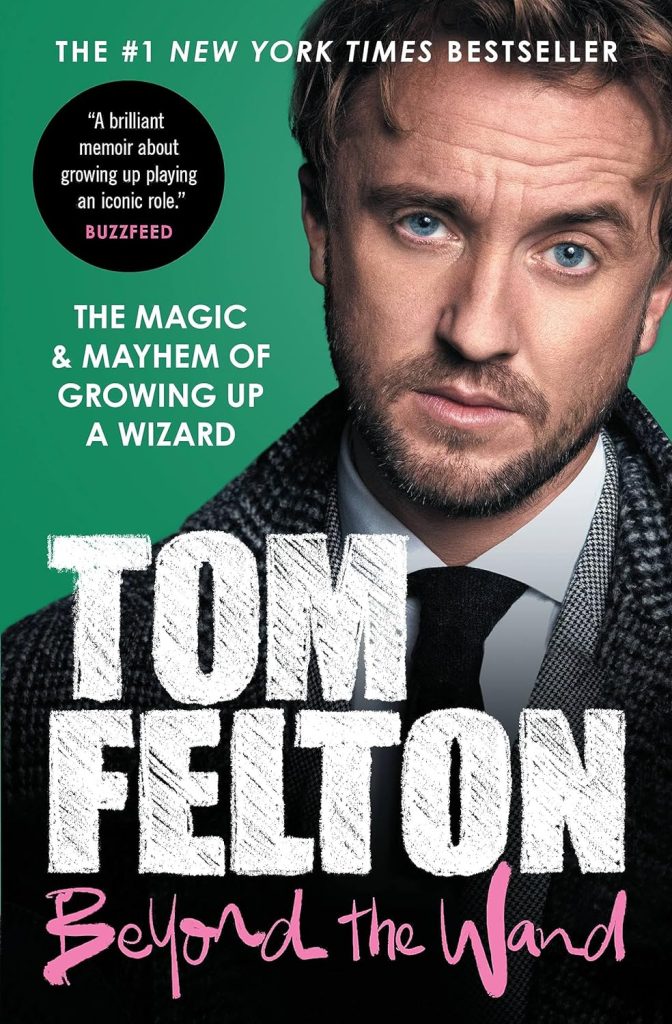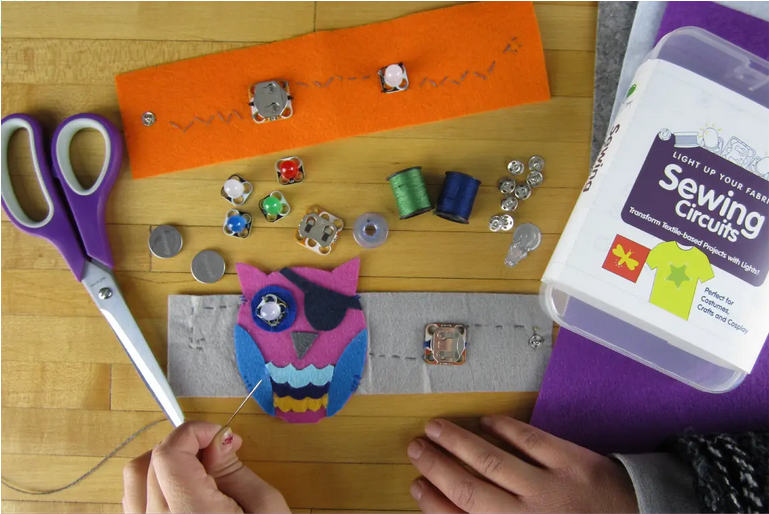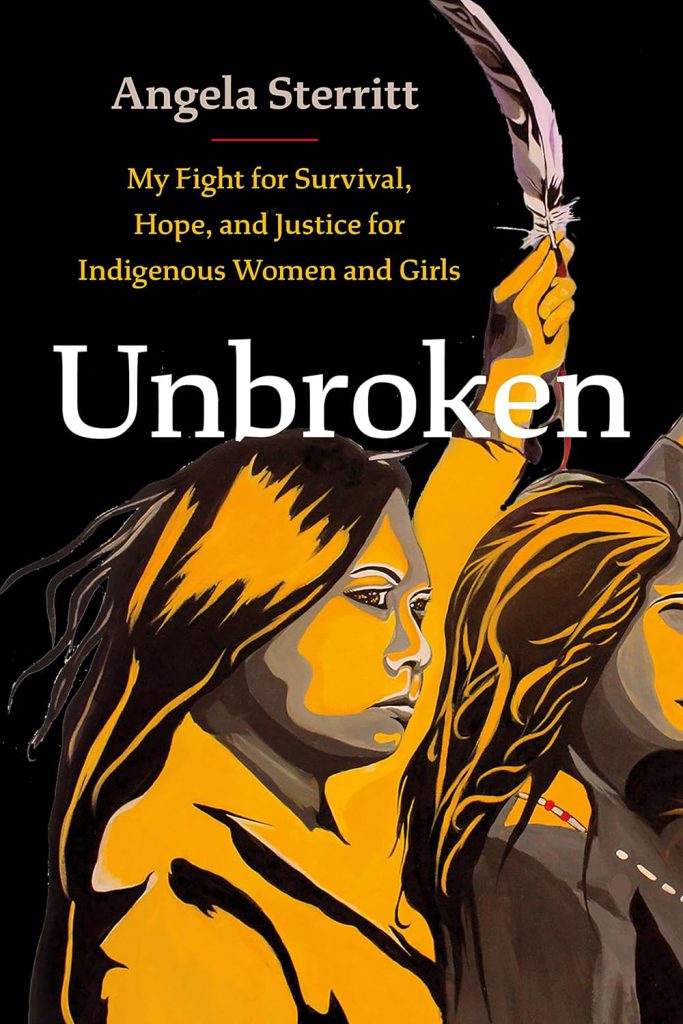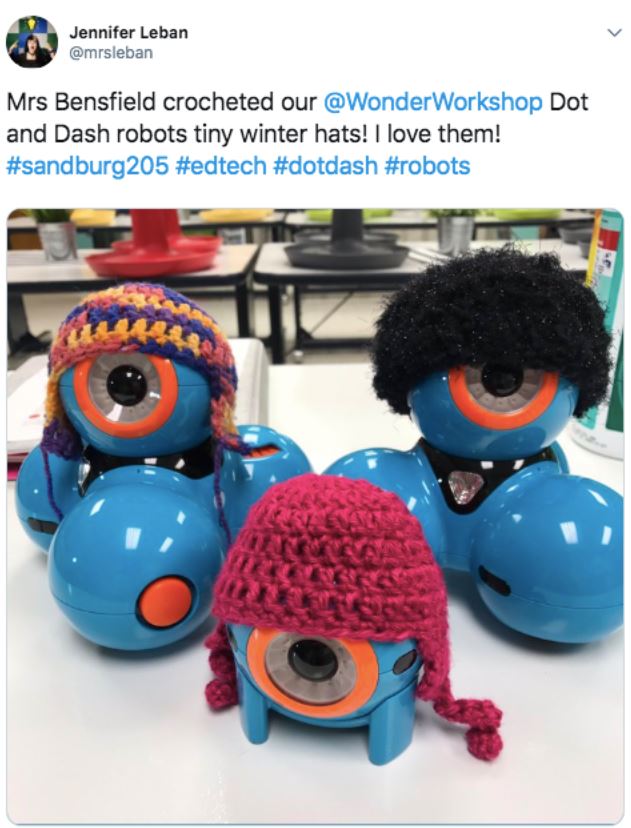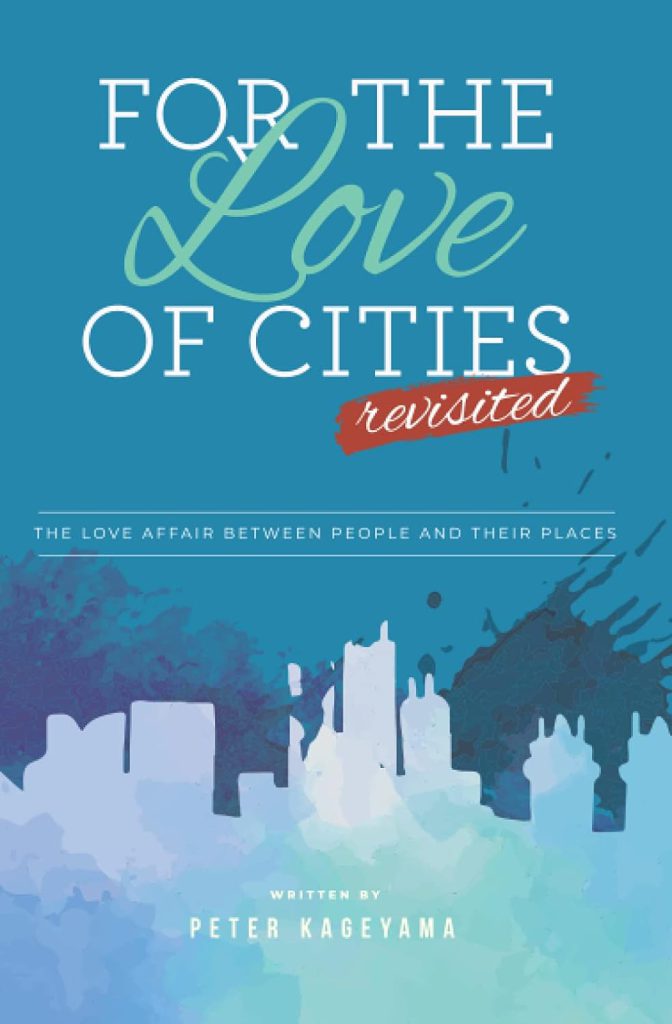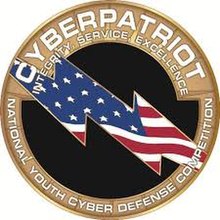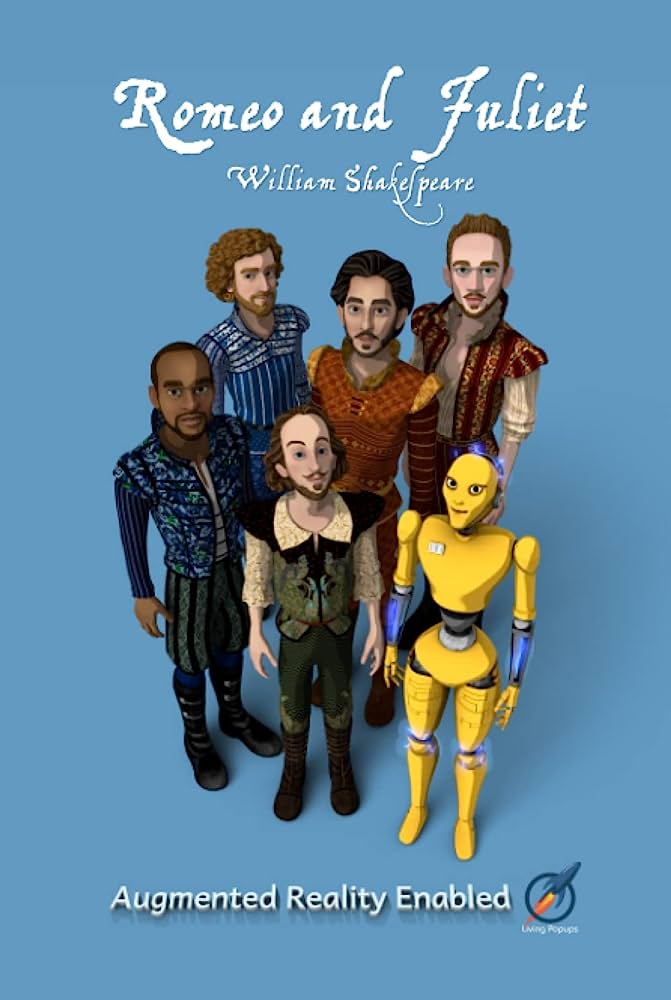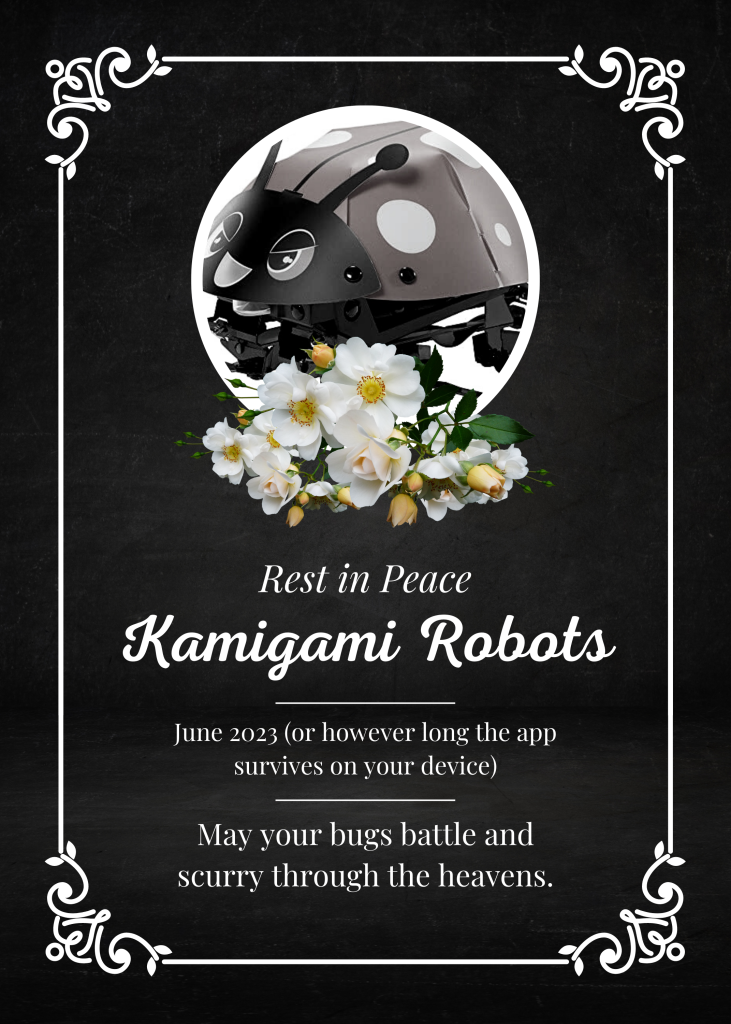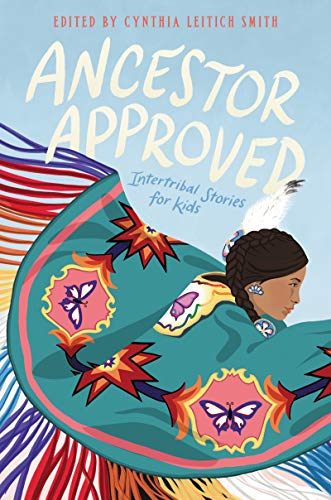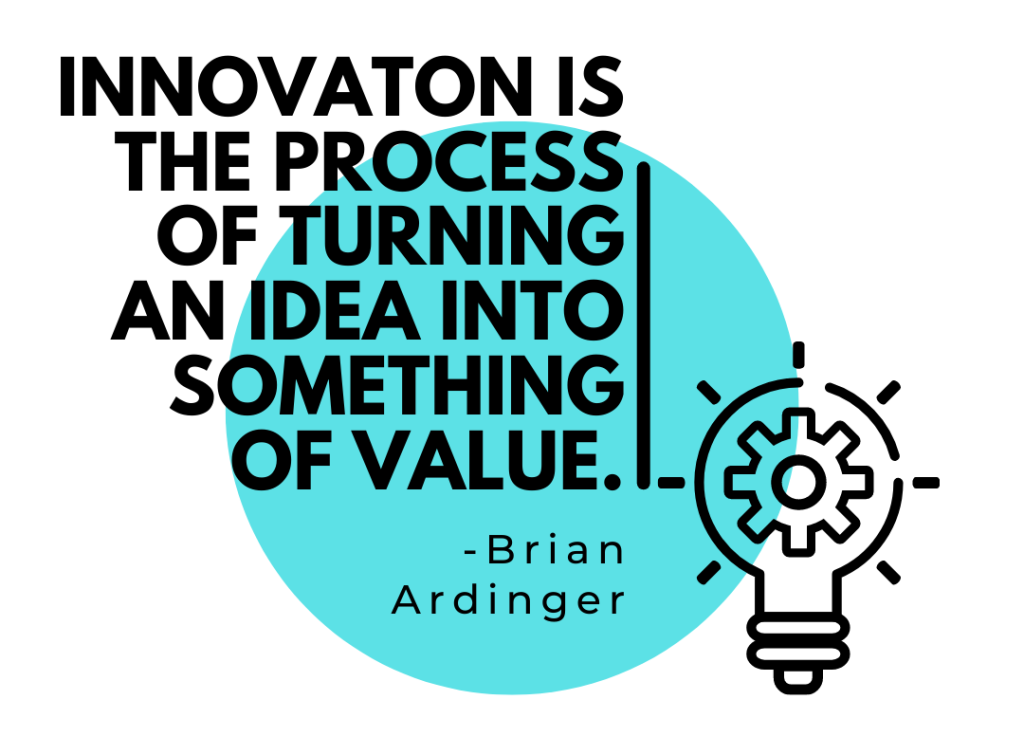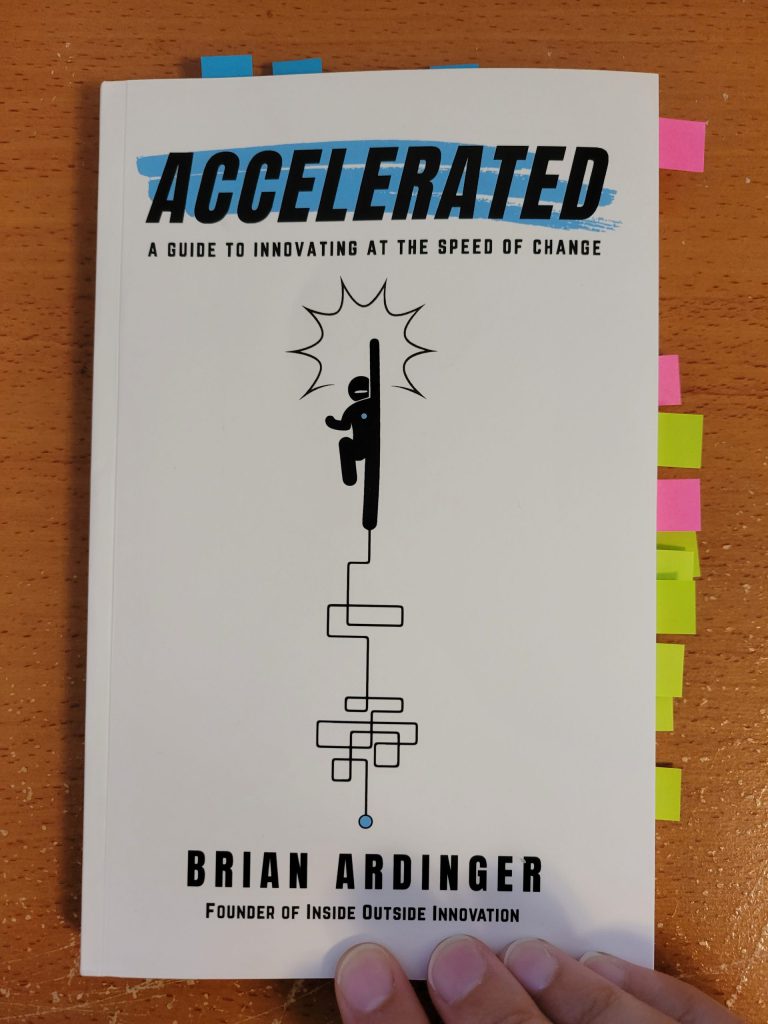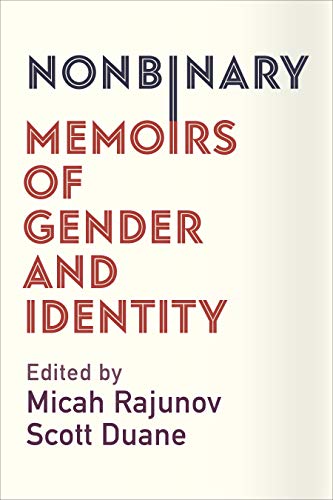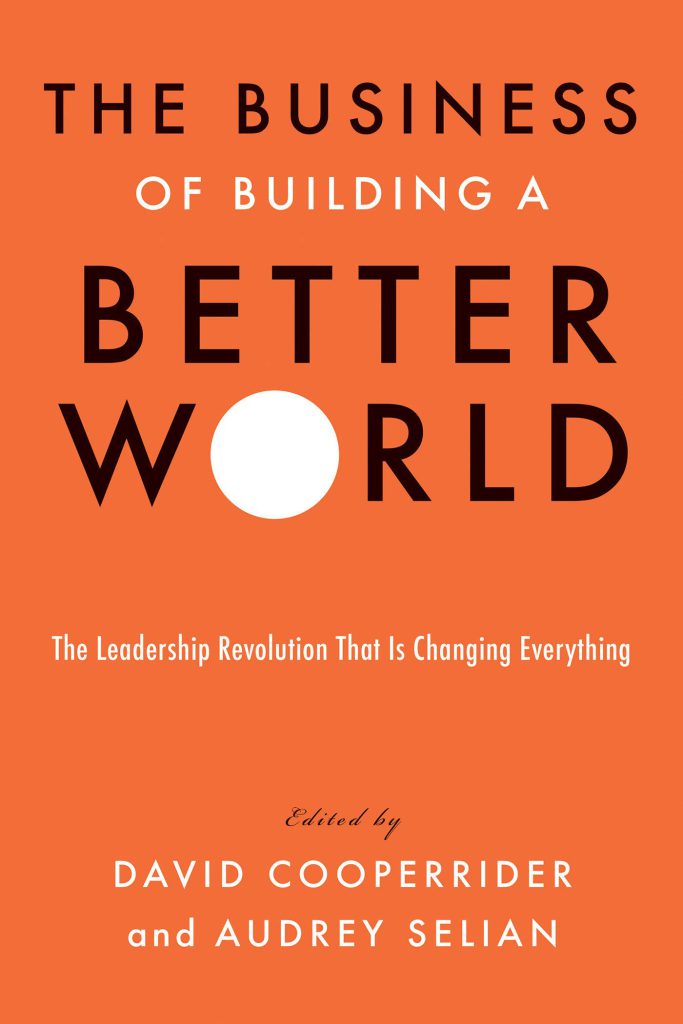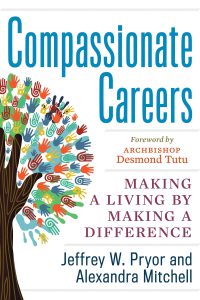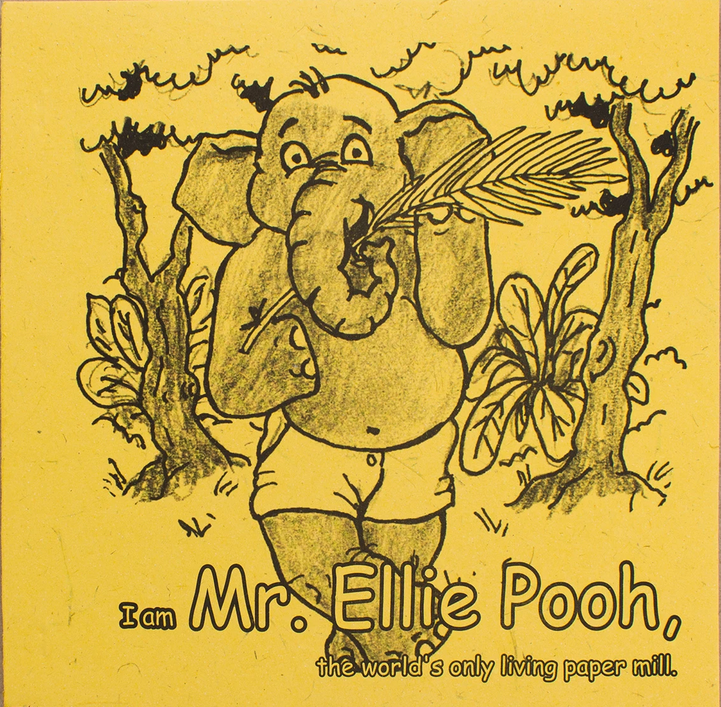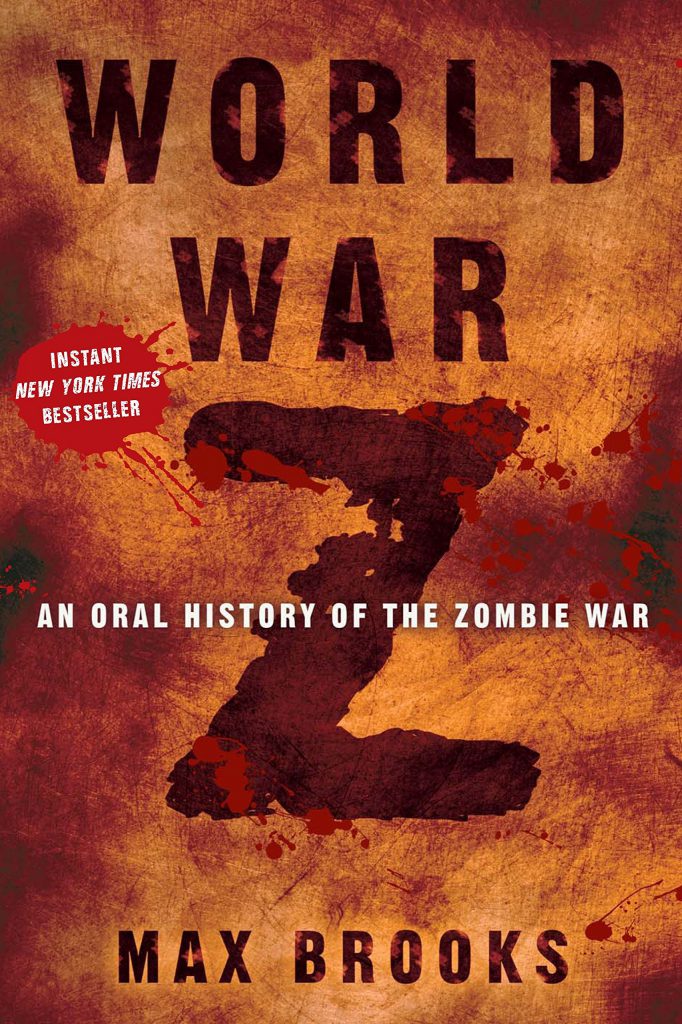Search the Blog
Categories
- Books & Reading
- Broadband Buzz
- Census
- Education & Training
- General
- Grants
- Information Resources
- Library Management
- Nebraska Center for the Book
- Nebraska Memories
- Now hiring @ your library
- Preservation
- Pretty Sweet Tech
- Programming
- Public Library Boards of Trustees
- Public Relations
- Talking Book & Braille Service (TBBS)
- Technology
- Uncategorized
- What's Up Doc / Govdocs
- Youth Services
Archives
Subscribe
Author Archives: Amanda Sweet
Visit the Tech Playground @ALA
If you’re going to ALA in San Diego this week, visit our Tech Innovation Librarian, Amanda Sweet at the Tech Test Pilot Playground in the Exhibit area. Get some hands-on exploration to test out robots, AI, and all that techy goodness. This is a collaboration between Amanda and Brian Pichman from the Evolve Project. It’s time to play!

Friday Reads: Beyond the Wand by Tom Felton
Malfoy. The name alone sparks hatred among the Harry Potter community. Unless you’re a Slytherin. Then I guess it strikes hero worship. Maybe envy? In the Harry Potter movies, Tom Felton embodied this boy-bully wizard character with his whole shriveled up heart and blackened soul. The smallest, well-timed facial expressions almost made me feel sorry for a darkened boy wizard, shaped by a domineering father. Tom Felton never appeared on screen. Only Malfoy.
Then Tom Felton wrote a memoir. I almost didn’t read Beyond the Wand: The Magic and Mayhem of Growing Up a Wizard because I love to hate Malfoy so much. I didn’t want to watch the movies and know the mix of pain and triumph behind the scenes. I didn’t want to be yanked out of my carefully crafted fantasy land by looking at the man behind the wizard. But I decided to stir that cauldron anyway.
Now I wonder if Felton would have made the same life choices if he had known he would likely hear wizard puns until he was old and gray. Probably. There are worse ways to go down in history. He has plenty of wizard puns himself. I had seen him on the Graham Norton Show and other chat shows with the stars, but his memoir made him more real than any TV show. In my mind he was still a teenager, but he’s actually 36, a year older than me. I know actors age beyond their movies, but I never realized he was so close to my own age all these years.
The collision of fantasy and reality felt unnatural. There’s a reason I never want to meet the actor. They’re never like the characters you know and love. Or hate. It took about four or five chapters for me to see Tom instead of Malfoy. I know I’m not the only one with this problem because Tom still gets death glares from Gryffindors on a regular basis. Even when he tried to go back to his regular school life in between filming movies. The Muggle is real. Ahem. Struggle.
When he’s just Tom, it’s fascinating to learn how he sees the wonderful world of Harry Potter as a tool to bring people together. He believes in unity and shared purpose, just like his co-star Emma Watson. Off screen, he is a whole person who struggles with depression and figuring out who he is and what’s next in life. Regardless of common human struggles, Tom’s overall outlook on life and the world is something everyone should aspire towards.
Long story short, I’m glad I lifted the curtain and saw the man behind the wizard. Incredible things can happen when you decide to stir the cauldron.
Felton, Tom. Beyond the Wand: The Magic and Mayhem of Growing up a Wizard. Grand Central Publishing, 2022.
Make ‘n’ Take Circuit Kits: Brown Dog Gadgets
I know summer reading is taking the world by storm right now, but kids still want some circuit goodness even during the summer! If you’re looking for some quick and easy projects you can do right out of the box, try the circuit kits from Brown Dog Gadgets!
Their Sewing Circuits, Micro:bit rover kits, Solar kits, Origami Circuits, and a lot more are a level above the other kits I’ve tried. Here’s why:
- Excellent instructions
- Well packaged for individual or large group use, depending on the kind you buy
- High-quality parts that actually work
- Easy online ordering & tracking
- Try before you buy- order a sample pack
- Nylon conductive tape is safer and easier to use
- Crazy Circuits system is better for little fingers
Nylon Conductive Tape: For those who have used circuit kits before, I want to clarify those last two items. Traditionally conductive tape is metal and can be pretty sharp. I’ve walked away with far too many cuts on my fingertips after the old paper circuits. Brown Dog uses nylon conductive tape that feels like fabric. It’s durable, but can be repositioned on your project without losing stickiness. They sell their tape separately, so even if you have a bunch of paper circuit supplies already, it’s worth it just to gleefully throw out your old, metal, finger-hating, conductive tape.
Crazy Circuits: Their Crazy Circuits components make it easier to grip and work with LED lights and other small components. Traditionally, LED lights have two small wires and you have to figure out which side is the positive side, and which is the negative side, then make sure the tape makes contact with the right side. Crazy Circuits components are connected to a little circuit board and are easy to grip. So you can tape directly to the board, or use their conductive thread to build a circuit. The large holes also work with Lego bricks so you can make more cool creations.
Pre-packaged kits or individual components: Brown Dog’s pre-packaged kits are great for Code Clubs, make ‘n’ take kits to send home, makerspace activities, or anything your librarian heart desires. Some of their kits use their custom Crazy Circuits system, others use regular LEDs and traditional components. So you have your choice.
Check out Brown Dog Gadgets for quick and easy projects you can order online. They’re geared more towards K-8, but who doesn’t love to sew felt creations that can actually light up with joy? Stock up and pull them out on a rainy day.
Posted in Pretty Sweet Tech, Programming, Technology
1 Comment
Computers in Libraries 2024 (March 12- March 14)
I do an overview session of the Computers in Libraries (CIL) conference every year on NCompass Live sharing all the latest trends, tools, and techy tips. This year I remembered to tell you about the conference ahead of time! If you’re wondering, CIL is a magical time of year where libraries come together to talk about all things technology.
This year (March 12-14) there are tons of sessions on AI in the library, website re-design, next-level makerspaces, building knowledge hubs, cybersecurity, creative partnerships, tech for marketing, innovation spaces, and everything your techy little heart desires. It’s my happy place. I’ll also be doing two sessions and a workshop if you’re interested.
The Nebraska Library Commission offers discounted rates for CIL registration. If it’s not in the cards for you this year, tune into my NCompass overview session on April 24, 2024. Or do both, it’s hard to catch everything.
Learn more about the Computers in Libraries Conference, or register on their website. It’s always in Crystal City, VA, a short train ride from the Smithsonian museums and all the attractions in D.C. if you want to multitask. Remember to grab the Commission’s discount code first!
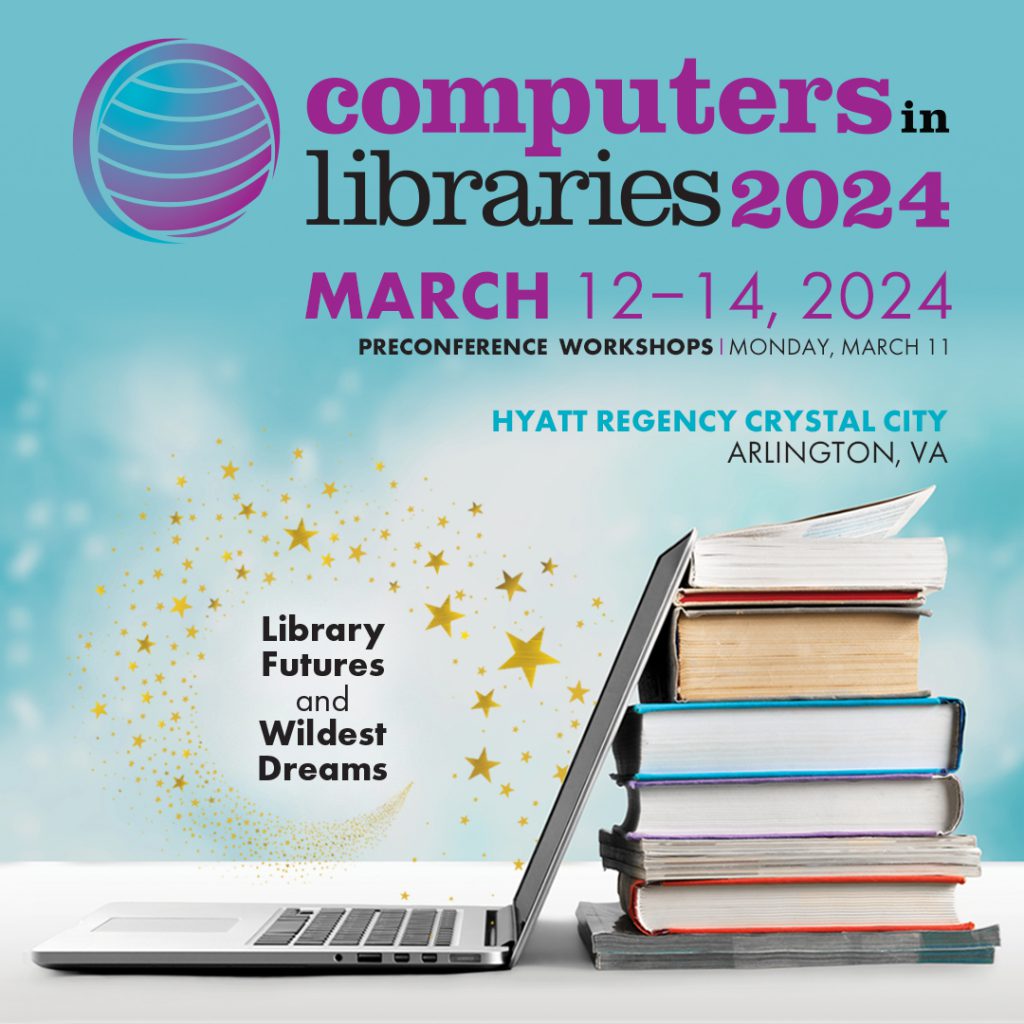
Friday Reads: Unbroken: My Fight for Survival, Hope and Justice for Indigenous Women and Girls by Angela Sterritt
Several years ago, I heard my dad scream in the middle of the night. It was such a foreign sound I thought it was leftover from the dream that had woken me up in the first place. I froze on high alert, listening. Nothing. I had nothing in my memory to compare the sound against, so it was easy to quietly dismiss the scream as a dream.
Months later, my dad and I were watching a movie about missing and murdered indigenous women and I found out my aunt had been murdered long before my life was even a possibility. He said the only time he ever screamed was that night when he woke up and saw her face next to his bed. The scream was real, and I did nothing. I didn’t know what to do with that information. I wanted to know more, but nobody ever speaks her name. The pain is still too great. There are probably others I don’t know about who were lost.
So I read Unbroken: My Fight for Survival, Hope, and Justice for Indigenous Women and Girls by Angela Sterritt, a Native journalist who grew up on the streets of Vancouver, Canada. I’ve read a lot on this topic. The book is part memoir and part investigative journalism as Sterritt blends together her own story of survival with the stories of those who were lost along the Highway of Tears in British Columbia. This is a stretch of highway where more than 40 Indigenous went missing or were found murdered. I thought it would be hard to read, but it wasn’t. Each story is filled with an equal amount of love and heartache. As I read, I wondered about my aunt’s story.
Sterritt tells these stories because “She could have been me”. I share the book because this problem is bigger than Canada. My aunt was found in Seattle. In the state of Washington alone, in a single year, over 5,000 Indigenous women and girls went missing. In smaller numbers, similar stories can be found in Alaska and other parts of the nation. As Sterritt shared her experience of walking the same streets as these lost women, I realized that I probably walked on the same street where my aunt lost her life. I’ve been to that area in Seattle several times, often at night. The statistics were mind-boggling. The stories struck me to the core.
As I read deeper, I remembered my mom telling me that I shouldn’t wear my beaded earrings, even though I love making them. They make me feel good. She wouldn’t say why, but she was disturbingly adamant that I shouldn’t wear them. At the time, I interpreted this as disrespecting a heritage that wasn’t her own. I wore them secretly in rebellious Native pride. Now I realize I was missing vital information. My aunt was murdered by a serial killer targeting Native women in Seattle. On the wrong streets, those earrings make me a target. I still make and wear my beaded earrings proudly, but when the shadows come out at night, I hide my heritage in a jewelry box in my purse. 5,000 women in a year. She could have been me.
I used to lay awake at night wondering if I would wake up in the dead of night and see her face. Would I recognize her? Did she spill over from a nightmare my dad was having? Would I share the same dream? I wondered if the desecration of murder was so powerful it could scream through the generations.
All I know is that this book was a journey for Sterritt. It was a journey for me. The stories of these women deserve to be told. Sterritt lived a hard life, but she emerged Unbroken. She seeks justice for the women who were lost along the Highway of Tears. She uncovers unbelievable acts of racism and unfounded hatred for Indigenous people. She shows how law enforcement ignored the problem and more went missing. She refuses to allow the media or the public to turn a blind eye to difficult topics. She lived on the wrong end of justice for long enough to show she speaks the truth.
Most of all, she shows how Indigenous women can survive and thrive in life. This book may be hard for some to read, but knowledge is power. Now I know what my earrings really mean. It’s not fair or just, but I have the power to make myself a little bit safer. It did help in a gas station parking lot late one night. That night, I was white. The world should know that statistically, the world is more dangerous to Native women. Read and learn the root causes of these terrifying numbers, especially if you have a Native population. Help keep that population alive.
STERRITT, ANGELA. Unbroken: My Fight for Survival, Hope, and Justice for Indigenous Women and Girls. GREYSTONE BOOKS, 2024.
Pretty Sweet Tech: Holiday & Winter Tech Kit Activities
Most of you probably know we offer Tech Kits Through the Mail to school and public libraries in Nebraska. But did you know that many of those kits have really fun holiday and winter themed activities? Check out a kit and try one one or all of these activity ideas this winter:
- Dash & Dot Winter Activities (age 6+): Design your own winter parade floats and program them around a parade obstacle, record your own winter theme song, challenge your friends to a snowball fight, and more!
- Finch 2.0 Robot Winter (age 6+): Turn your robot into a snowplow, build a holiday parade and add a green screen backdrop if you’re feeling fancy, or create a fun winter window display.
- Hummingbird Bit Premium (age 8+): Take your winter window display up a notch, craft and program an interactive winter story scene, or add a moving background to your winter parade video!
- Ozobot Evo Robot (age 4+): Design a Winter Wonderland and challenge others to navigate your creation, create a fun snow maze, use the plow attachment to clean the streets, or use your imagination to visit Narnia!
- Micro:bit (age 8+): Make an LED snow globe animation using the built-in display, blow out an LED candle or program your micro:bit to let you know when the sun is finally out again.
Find a full list of kits, or check out a Tech Kit Through the Mail using this link. Here are the loan program details:
- Kits can be checked out for 30 days at a time.
- You can check out multiple kits at once.
- Kits are shipped to you for free, and use of the kits is free.
- You only pay return shipping. (Some library systems may help offset these costs. Ask your system director if this is an option near you.)
- Check out the Tech Kit Loan Policy for more details.
I hope you have some winter wonderland fun with the Tech Kits Through the Mail!
Posted in Pretty Sweet Tech, Programming, Technology, Youth Services
Tagged Pretty Sweet Tech, stem, Tech Kits, Tech Kits Through the Mail
Leave a comment
Pretty Sweet Tech: Prairie STEM Library Pack Raffle!
The Nebraska Library Commission partnered with Prairie STEM to raffle off 42 STEM Library Packs! Each Library Pack comes with 12 individual kits that have instructions, career exploration information, and all the materials you need for assembly. Some of the design-related activities can be enhanced by items you have laying around the library.
About Prairie STEM
Prairie STEM is an Omaha-based nonprofit that offers STEM kits, educator training, and outreach programs in the Omaha area and beyond. They’ve partnered with various schools, libraries and educational institutions across the state, including virtual reality, drone, and smart garden programs.
Need Kits Right Away?
Through this partnership, you also have the option to purchase kits directly from Prairie STEM. You can get Classroom Packs of 12 or 24 of any or all of these types of kits:
- Cell Building Innovation
- Environmental Challenge
- Pendulum Painting
- Toothpaste Challenge
- Blood Model Innovation
- Design a Glider Innovation
- Quick Escape Challenge
Purchase kits directly at this link: https://stem-kits-nebraska-library-commission.cheddarup.com
Feel free to contact Prairie STEM to ask about partnering on any programming, custom kits, or educator/ facilitator training in your community.
Enter the Raffle!
Fill out this quick form to enter the raffle and be 1 of 42 libraries to win a STEM Pack! All the details are in the flyer below:

Friday Reads: For the Love of Cities, revisited by Peter Kageyama
A lot of you know that I’m not from Nebraska. I was born near Milwaukee, WI and lived there until I went to college in Minnesota. Over the years I’ve visited a lot of places too. Everywhere I go, I talk to people and get a feel for the place. I was in Tokyo, Japan most recently, so I’ll use that as an example. As I walked the streets of this foreign land, I had to remember that most people in the city were just home. Bear in mind that I don’t speak Japanese very well, but you can still tell who’s happy where they are, and who is crawling out of their skin waiting for a chance to leave.
That’s what For the Love of Cities: revisited by Peter Kageyama is all about. What does it take to make people fall in love with their city? Why do people choose some cities over others? Whenever I visit a new place, I can instinctively tell whether or not I could live there. I never really considered any actual criteria for the decision until I read this book. I just knew. Now I see greenery, coffee shops, places to relax and connect with people, clean streets, and plenty of shops and art embedded into the fiber of the community. I learned how to really look at a city.
My academic days still make me refer to authors by their last name. But this book makes people feel like family. So I’ll call him Peter. I don’t think he’ll mind, and I’ll also never meet him to find out. Peter digs into how cities come to be, and the many variables that force change over time. I also watched the author talk Peter did with Heritage Village. It’s free on YouTube if you want to check it out. That video adds visuals to his stories about how history shaped cities like Chicago, Detroit and many others. Sometimes dark parts of history like racial segregation and hate shape city lines that must be repaired over time for the city to adapt and thrive in the future.
When I visit other cities I usually dress to blend in. Just another Midwesterner in a t-shirt and leggings. In Japan I didn’t even try. Pretty sure I was the only curly-headed Native American in the whole country, so I wore bright colors or coffee t-shirts and capris everyday. My body type was never going to fit into such a petite country anyway. Even though their waffles are surprisingly good. I digress. Japan was awesome.
If you didn’t factor in the language barrier and distance from everything and everyone I know, I would actually live there. I walked the streets in my deeply American sandals and pondered how cities draw people in to live and work in a new land. What drew me to Lincoln, NE? What made me stay? The people? The place? The job? A little bit of all the above? I have new answers now.
Read this book if you want to look at your city differently. It’s a book full of stories and observations about little things that blend into the background of the place you’ve lived for years. When you’re done, take a walk around your city. Town. Wherever you call home. Try it with any town. Ask yourself why people choose this place? Why do people stay? If people are leaving, what could change to turn the tides? Peter will help you explore old places with fresh eyes. Just give it a try.
Pretty Sweet Tech: CyberPatriot’s National Youth Cyber Defense Competition
Cybersecurity is one of the top growing tech careers in the nation. The Air Force Association started their CyberPatriot’s National Youth Cyber Defense Competition to help middle and high school students explore cybersecurity careers by taking on the role of a cybersecurity systems administrator, working to prevent and address cyber threats to a small business. CyberPatriots is now the world’s largest cybersecurity competition!
Eligibility: The competition is open to all schools and approved youth organizations, including Boys & Girl Scout troops, STEM groups, libraries, and homeschool groups. School and public libraries are encouraged to apply!
Learn more about the competition structure, team member requirements, costs, and tech requirements on the CyberPatriot website.
Registration is due by October 3, 2023 so start planning now!
While you’re on the site, check out the Air Force’s other cybersecurity resources for senior citizens:
- CyberGenerations: This pre-packaged program is designed to introduce senior citizens to cybersecurity basics, password management, common internet threats, scams and fraud, and social media safety. CyberGenerations offers a Self-Paced Guide, and Workshop Resources to help facilitate virtual or in-person workshops.
- Tech Caregiver: This training course with resources and guides certifies trainers to assist senior citizens to safely operate online. This is a good course to get comfortable facilitating CyberGenerations workshops in your community.
Posted in Education & Training, General, Pretty Sweet Tech, Programming, Technology
Tagged Pretty Sweet Tech, prettysweettech, Programming, stem, technology
1 Comment
Grant Opportunity: High School Drone Program
If you work with high school students in your library, or know a high school in need of a drone program, check out this FAA Aircraft Pilots Workforce Development Grant Program.
The FAA is awarding up to $500,000 to multiple applicants for a total of $4,500,000 in an effort to attract future aircraft pilots, aerospace engineers, or unmanned aircraft systems operators (drone operators) in the U.S. Starting a drone pilot training program in your school or library is a great way to attract future aviation professionals!The grant application is due August 16, 2023, so think fast! Feel free to check out these drone training resources for high school age students as inspiration for your grant writing:
- Skyop: Drone Training Programs for High Schools. Reach out to them for a consultation and customized program. This program can actually result in pilot certification.
- Droneblocks Curriculum for DJI Tello Drones
- CoDroneEDU Classroom Packs from Robolink
You can also reach out to local community colleges and universities to get the most up to date drone-related curriculum, or more local resource and program referrals. I’ll stop droning on now. Happy applying!

Posted in Education & Training, General, Grants, Pretty Sweet Tech
Leave a comment
#FridayReads Romeo & Juliet… with a Robot?
Shakespeare has a robot now. She’s yellow, humanoid and kind of sassy as she introduces each scene in this revamped Romeo and Juliet.
Did I mention she actually walks around the page and talks to Shakespeare on occasion? I wish I could say you will open Living Popup’s magical book and she just appears like a Star Wars-esque hologram on the page, but we’re just not there yet. This book is Augmented Reality (AR) Enabled, which means you download an app on your phone, point your camera at illustrations in the book, and the scene unfolds on your screen.I had so much fun with this book at the ALA conference that I got a little giddy and bought it on the spot. I’m a big kid now, but Living Popups actually made me like Shakespeare. If I had had this version as a teenager, my eyes wouldn’t have glazed over while being forced to analyze every turn of phrase back in the day. But fear not! The original Shakespearean text remains untouched, just formatted more like a modern movie script than the version with tiny font that was inflicted upon me. I’m replacing my obligatory Shakespeare collection with the AR version immediately.
The AR illustrations appear at the start of every act and scene. We all know the themes, character development, and lessons learned from Shakespeare are timeless. The robot is another fun way to bridge the gap from the old, unfamiliar language to the new world. Unlike my Shakespeare professor in college who seemed determined to make me memorize passages, the AR robot jumps in to explain the setting, little parts of history, and important plot points in a way that actually makes sense. And doesn’t make me want to take a nap.
It was also fun to see a robot have a conversation with Shakespeare to ask him what in the world he was thinking, writing a play about two dying teenagers. I paraphrase, but you get the idea. Robot gets real. If you want to make Shakespeare interesting, but still stay true to the original text, the robot can help. It’s better than sitting down and watching the Leo DiCaprio movie again. Though that is an undeniable classic. I own the soundtrack. It couldn’t hurt to do both? I digress.
Living Popups makes a little quartet of robot-ified Shakespeare books, some Boxcar Children books, Animal Farm, Legend of Sleepy Hollow, and a growing collection of books for Elementary to Middle school students. The AR scenes are actually good, with voice acting and everything.
Give Living Popups a try if you want to see the future of books.
Pretty Sweet Tech: Free AI Video Generator Tool
Do you want to play with AI generated videos in your library? I just stumbled across a website called Kapwing that will allow you to generate short, watermarked videos for free. They also have a reasonably-priced Pro plan if you’re looking for a video editor with AI capabilities for your library, or want to offer this cool new service to patrons.
If you’re new to AI generated videos, this service allows you to enter a brief description, and Kapwing will automatically generate text, music, and video clips that match your topic. Adjust phrasing or trade out images to get an end result that works for you! You can also generate an AI Video Script using a similar process. Kapwing uses the ever-popular ChatGPT to generate the scripts.
Example Video
I tried out both the AI Video Generator and the AI Video Script Generator and they are both alarmingly good. Here’s the video Kapwing generated when I entered “libraries supporting job seekers searching for meaningful work”. I didn’t do any extra editing. This is the video as is:
Tutorial Instructions
Want to try it yourself? Use these instructions:
- Go to https://www.kapwing.com/ai
- Choose AI Video Generator. Click Create a Video with AI.
- Look for “Create a Video About”. Click in the text box and type in a description. (ex. create a video about frogs traveling to Paris who are deathly afraid of French chefs)
- Press enter to generate video.
- Choose the video size. 16:9 aspect ratio is recommended for YouTube and standard screens.
- Choose the text style. Click Generate Video.
- Login or create a free Kapwing account. Click “Generate Video” again after logging in.
- Wait for video to load. The slower the internet, the longer it takes, as usual!
- Adjust images, text, and settings as needed.
- Click “Export Project” (upper right corner)
- Choose MP4 for video. 720p resolution is the highest possible for free version.
- Click “Export as MP4”. File may take a while to load.
- Click “Download” to save on your computer or flash drive.
Note: The free version only lets you store 3 videos at a time. To create more, download your videos, then delete them from your Kapwing account. Or just delete them if you don’t need an archive.
If you want longer videos, more videos, higher resolution, or no watermarks, you will need the paid version of Kapwing. It’s about $16/ month/ user (paid yearly), so if you generate a lot of videos for your library, it might be worth it! You also have the option to use Kapwing as a regular video editor, without AI. There are plenty of tutorials!
The AI Script Generator is freakishly accurate too if you want to speed up the process of making videos for your library! Have fun playing with AI!!
Robot Warning: Kamigami Robots Discontinued
I’ve gotten a lot of requests for robot recommendations, many specifically about those cute Kamigami robots shaped like bugs and dinosaurs. While I do love the Kamigami robots in general, the manufacturer has discontinued the product. You can no longer download the app on Android, and it only works on older iOS devices that have not been updated recently. It is still available for download on iOS, but only works reliably on older phones.
Amazon lists all Kamigami robots as “discontinued by manufacturer”, but not all resellers post this same warning. I only found out the app is no longer supported by cross-referencing the comments across several Amazon listings. Kamigami was picked up by Mattel a few years ago, and it appears that Mattel is no longer keeping our favorite little bugs alive.
Long story short, buy Kamigami robots at your own risk. They are adorable, but all good things come to an end. I will miss those cute little bugs. If you already have one, program it for as long as you can. This post is going to get me a little misty-eyed! Another good gadget bit the dust…
Get Coding Ideas: Scratch Conference 2023 (Virtual)
If you’re looking for more coding and STEM activity ideas, Scratch, the popular (free!) drag and drop block programming language and website, is hosting their Scratch Conference 2023 virtually on July 20, 2023. It’s only $15 to register, with a free option if you have absolutely zero budget for extras. The theme this year is “Sparking Creative Connections”. Here are some of the sessions I bookmarked for myself:
- Including Diverse Learners w/ ScratchJr Tactile: Learn new ways to reach visually impaired students who want to engage with programming.
- Collaborative Scratch Hackathons: Find out how to set up a hackaton to bring together coders of all ages in your community. Help people work together to solve cool problems.
- Bring a Book to Life: Learn how to use code to bring books to life. Tell story through code in the library!
- Exploring Creative Possibilities w/ Generative AI in Scratch: Explore how generative AI tools like ChatGPT can work with Scratch to expand opportunities for students to learn more effectively.
This is a great conference for school and public libraries, and educators of all types! Scratch is great for all ages.
Learn more & register for the Scratch Conference 2023
Thursday, July 20, 2023
9am- 4pm EST
All Virtual!!

Posted in Education & Training, General, Pretty Sweet Tech, Technology
Tagged coding, conference
Leave a comment
Friday Reads – Ancestor Approved: Intertribal Stories for Kids
This Christmas I hunted around for Native American stories for my niece and nephew. They are finally old enough to start asking questions about their culture and the color of grandpa’s skin. My dad is from the Band River Band of Chippewa at the very tip of Wisconsin. My brother and I are half Native, which makes my niece and nephew a quarter Native. We all tan pretty well.
To help the kids learn their heritage, I am reviewing Ancestor Approved: Intertribal Stories for Kids, edited by Cynthia Leitich Smith. Not surprisingly, I learned a lot from this collection of poems and short stories as well. In hindsight, I probably won’t give it to the kids until they are in middle school or at a higher reading level, but it was still a good read.
Many of the stories centered on Indian kids learning their culture through powwow celebrations and everyday life on the reservation, or elsewhere in the world. My brother and I didn’t grow up on the reservation like our dad did, but the stories still felt familiar and well-worn. I’ve been to many a powwow in my lifetime, but my niece and nephew have never seen one in person. Now they can learn the good, bad and ugly of Indian life from the safety of this book.
While some stories pass down traditional fancy dancing and our native languages, one of my favorite stories was told from the perspective of a reservation dog observing people in all their flawed and wonderful glory. If you’ve never heard of a reservation dog, nearly ever rez has got one. That dog that cannot and will not be owned by a single person. Rez dogs are cared for by and cares for all the people on the rez. Sort of like a library cat.
Even though some of these stories represent specific tribes, when you stack them all side-by-side, the similarities are unmistakable. Every language has a word for family, belonging, fear, loss, identity, and all those very human things. Having explored stories from around the world, all of our Ancestors must have all been talking to each other for a lifetime.
If you want to peer into the lives of dozens of Native cultures, try Ancestor Approved. Our history comes to life through story. These stories are real and refuse to be whitewashed.
Friday Reads: Accelerated: A Guide to Innovation at the Speed of Change by Brian Ardinger
Not too long ago, I found myself in Chicago, visiting friends on my way to Wisconsin. Chicago fully reflects the speed of change and innovation taking over the world. I went out of my way to wave at the all-robot wait staff at X Pot, the new Asian fusion restaurant in the South Loop. That’s what people expect out of Chicago, New York and those bigger cities.
Brian Ardinger is a local innovator working to transform Nebraska communities into world-class innovation hotspots. I know him from the Open Coffee sessions he started many moons ago to bring innovators, business leaders, and aspiring entrepreneurs together to share ideas, solve tricky problems, and make unexpected connections that lead to the next great idea.
I’m also a fan of his tech and innovation themed Inside Outside newsletter, podcast, and resources. He does too much stuff to list in the innovation/ startup community.
But it wasn’t until I read his new book, Accelerated: A Guide to Innovating at the Speed of Change, that I fully understood what Brian does for a living as a corporate innovator and startup ecosystem builder. The book isn’t all doom and gloom about how tech is taking over the world at the speed of light. He establishes that the world is changing, but then does something peculiar: he makes innovation and change possible. Dare I say, optimistic.
Most innovation books shoot people to the moon and glorify SpaceX. Brian boils innovation down to “transforming an idea into something of value… Find a problem, solve the problem, and create value along the way”. Then he offers an innovation framework the average person can actually use, filled with easily digestible concepts and exercises you can try while reading, then incorporate into everyday life at home, work and everywhere in between.
Look at the world through a lens of possibility and you will find robot servers right here in Nebraska. No, really. X Pot in Chicago used robot servers to make a statement. Jojo’s Gelato and Grill in Aurora, NE hired the Servi robot to solve a real problem. Struggling to get applicants and support an already overworked staff, the owners at Jojo’s innovated at the speed of change and survived to tell the story. Jojo’s may have innovated more easily with access to this book.
While Accelerated is marketed to businesses and startup entrepreneurs, the concepts can be applied anywhere. Even libraries. The books I actively use get color-coded with Post-Its and earn a place on the bookshelf closest to my desk. Here’s what that looks like:
- Blue: Chapters or sections to refer back to immediately.
- Pink: Quotes and concepts for future reference.
- Green: Exercises and frameworks to try or reference immediately.
From experience, I know that innovation often starts with a quiet chaos. When you know what needs to change and why, it’s easier to navigate the winding, bumpy road necessary to make change happen. Whether you’re an innovation beginner or change-making guru, this book will give you the tools you need to reprogram yourself to tackle uncertainty, find your place in the world, and add value anywhere you land.
This book is also a great option for libraries wanting to showcase Nebraska authors that are giving back to the community. Offer it as a resource to drive local innovation, or as a tool to tackle a rapidly changing world. The end of chapter exercises and recaps also make great book club discussion starters. Innovation is what makes the world go round. Give it a try.
Ardinger, Brian. Accelerated: A Guide to Innovating at the Speed of Change. Lioncrest Publishing, 2022.
Friday Reads: Nonbinary: Memoirs of a Gender and Identity
I found myself talking about all-girls code clubs in an NCompass Live presentation earlier this week. Mid-sentence, I remembered an episode of the Queer Eye where a trans girl was trying to find groups in school that fit her identity. As I recalled her troubled face, I ended the sentence to include people who identify as girls. I tried to limit the verbal word vomit as I struggled to find the right words to describe people who don’t identify as male or female.
That night, I went on Hoopla and checked out the audiobook for Nonbinary: Memoirs of Gender and Identity by Micah Rajunov, hoping to find the right words. Plus, it’s almost Pride Month, so it might be a good book to help people understand a changing world. The nonbinary narratives in this book give a voice to those who do not fit neatly into the gender categories of male or female. As with any large group of people, one collection of stories can never represent an entire subset of the population. Each individual defines themselves.
Honestly, I find it difficult to neatly define what nonbinary means when the nonbinary population is still trying to define themselves, and struggling for acceptance in the world. Before reading this book, I knew that some nonbinary people used the they/them pronoun instead of she/he. Several years ago, I met them in a writing group and heard their story. Yes, you read that sentence right.
To this day, I still hear my grammar school teacher saying on repeat: ‘They’ are a group of people. She is an individual. He is an individual. We had to practice proper pronoun use around the room. Now, I still have to override the grammar side of my brain to be inclusive to all genders. So, I met them in a writing group. Just one person out of many people I met in that group.
I heard their story in that group, and now I have read the memoirs in this book. I learned from a man who finally gained the courage to transition to a female after fifty years. A trans advocate revealed the struggle of the trans nation. I added new words to my vocabulary: femme, gender rebel, genderqueer, nonbinary. These words are not my own, so I can’t help but pronounce them as though practicing a foreign language. The words are not wrong, just new. My voice tilts up at the end, as though asking if I got it right. Femme? Genderqueer? They’re never there to answer. This book gave them a voice and helped me find better words.
Stories are how we come to understand ourselves and the world. Sometimes we find a piece of ourselves we never knew was missing. New ideas give deep-seated, intangible feelings a name. Naming an enemy gives us power to stand strong in the face of adversity. Like Rumplestiltskin. I read and wondered how many people saw ‘nonbinary’ and found peace after decades of mental anguish. Personally, I would prefer them to be nonbinary rather than depressed or suicidal.
So next time I talk about a Girls Who Code club, I will say that they are welcome. Anyone who wants them to feel safe and included is welcome. Anyone who wants to degrade them and make them feel insecure, unsafe, and less than human can see themselves out. Maybe not forever, just long enough to process. We are all human. Read their story, then we can all learn together.
Rajunov, Micah, and Scott Duane, editors. Nonbinary: Memoirs of Gender and Identity. Columbia University Press, 2019.
Friday Reads: The Business of Building a Better World & Compassionate Careers
I’ll just put it out there: Income inequality disturbs me, and I have a special dislike for businesses that put profits before people. This book does too. The Business of Building a Better World outlines the changes that need to take place for businesses to support humanity, rather than treat people like human capital. To me, this statement seems obvious. People are human and want to know that the work they do everyday means something. Businesses should help solve climate change, gender and racial inequalities, environmental issues, oceans polluted by plastics, and more. Even if social change is not the core mission, businesses shouldn’t make the problem worse.
Yet this book is described as “a visionary look at the future of business”. As someone who has worked in nonprofits and libraries her whole life, I remain baffled that this concept is new. Luckily, this book isn’t the only one talking about how to change the business world for the better. I chose this book for this review because the title does not include “social change”, “social justice”, “manifesto”, or any number of other overwhelming or potentially triggering worlds.
Published recently in November 2021, this book acts as a summary, using stories and articles to show how businesses need to change to support the world. The book focuses on changes to leadership, from management practices to a shift in core values. Yet I read the book for a different reason.
I’ve been helping libraries build resources related to technology, skill-building, and the future of work. Like many, I realized that both leaders and employees need to change. Employees need to change the way they vet out employers and decide what to do for a living.
Look at the flip side in Compassionate Careers: Making a Living by Making a Difference, by Jeffrey W. Pryor. Part of the incentive for businesses to change is for employees to demand change and communicate the desire for work that makes the world better. By shifting the way we look at existing and future jobs, we can all make a difference.
We can’t have one side of the coin without the other. Leaders and employees need to work together. Neither book should be revolutionary. Nobody should bat an eye because the concepts are so obvious. People deserve to work under leadership that treats them like humans who are part of the wider world. Leaders should only be leaders if they understand what matters to people and how their organization can support the wider world.
Try to say it out loud: I deserve work that matters in the world. We all do. Our collective systems should support work that builds a better world. How did that feel? Could you get the words out? Did the words come naturally, or did your tongue feel thick with disbelief and anguish that future generations could have meaningful work while you did not?
Read The Business of Building a Better World and Compassionate Careers if you want the world to suck less in the future. As libraries continue to support job searches, career exploration, and the search for personal identity, maybe we help turn the tide for the better.
Friday Reads: I Am Mr. Ellie Pooh by Dr. Karl Wald
This is the first time I’ve reviewed a coloring book. But it’s made out of elephant dung paper, so I couldn’t resist. Turns out when you wash the stinky poo part away from elephant dung, you get raw vegetation. I don’t want to know how they found this out.
After boiling the vegetation in a pressure cooker to kill bacteria, the end-result is mixed with post-consumer paper. From here, it’s smooth sailing. The paper can be made just like handmade paper: screen, press, and hang to dry. I used to make paper when I was in high school, so I was fascinated by elephant dung paper.
Now kids (and adults!) can color on paper that is 50% fiber from elephant dung and 50% recycled paper. The process was perfected by Dr. Karl Wald and his veterinarian friend on a trip to Sri Lanka. The book tells the story of how the paper is made, and how the book you are holding is saving elephants from angry farmers. You can read the story behind the story on the Mr. Ellie Pooh website. You can also see pictures of the paper-making process and how Mr. Ellie Pooh is creating jobs for local papermakers and artisans in the “About” section.
I got these coloring books for my niece and nephew for Christmas a couple years ago and they loved Mr. Ellie Pooh. Enough to grab Winnie the Pooh and declare, “Pooh is an elephant too!? There can be only one!” Then threw Winnie behind the couch. Poor bear.
At the time, I found the coloring books at Ten Thousand Villages in Lincoln. I’m not sure if they are still there, but they are also sold on the Mr. Ellie Pooh website. Apparently they have a bunch more stuff now too. I didn’t see the coloring book on Amazon, but the store does carry some items through Amazon as well. So if you’re looking for a new activity in the library, give Pooh a try.
Disclaimer: Pooh paper looks and smells just like regular paper. If I hadn’t read the stories and seen the pictures, I would have never known. That’s the power of pooh.
Friday Reads: World War Z by Max Brooks
Yes, Max Brooks is Mel Brooks’ son. No, World War Z is not anything like Spaceballs or Young Frankenstein. Just get that out of your head right now. No comparison. None.
World War Z: An Oral History of the Zombie War brings the zombie apocalypse to life through the shared stories of military personnel, medical professionals, filmmakers, rescue workers, submarine operators, political figures, and other key players of the Zombie War. The book has been out since 2006, but the zombies are more real today then ever before. I learned more about global politics and human relations from this Oral History than I did in a semester’s worth of World Politics in college. The zombies were an added bonus to my global education.
The audiobook version of World War Z is narrated by a full cast of characters who personalize each story as their own. I listened to the chapter narrated by Allen Alda twice because he has seen war! I may have also re-watched a couple episodes of M.A.S.H. in between. Alda was acting in M.A.S.H. The zombies are here today. There’s a difference.
Each chapter takes you to a new part of the world. Travel to Japan, China, Korea, Denver, the open ocean, and more. See the world from every perspective and hear from the people on the front lines of the zombie war. These people made sure the world kept spinning, even as loved ones turned into flesh-eating zombies, decimating the global population. It’s a messy job, but somebody’s got to do it.
The global travels begin with patient zero in China, through the initial spread and panic, and on to the perseverance of the human population. I won’t spell out the ties to the current pandemic, but it’s not a great leap to link the two together. I’m sure there will be high school and college papers written on the topic for years to come.
Read World War Z to escape the current pandemic and learn about the real world from different perspectives. If you’ve read the book before, give it a listen. Close your eyes and embrace the chaos. Consider it a practice run.
Brooks, Max. World War Z: An Oral History of the Zombie War. New York: Crown, 2006. Print.
